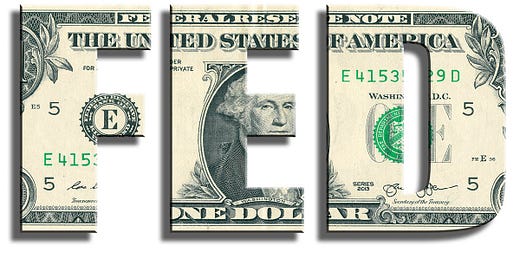A very successful fund manager, the late Martin Zweig coined the line, “Don’t fight the Fed, don’t fight the tape”. Many other successful hedge fund managers have quoted the same and practised it to be very successful. One of them is Stan Druckenmiller. There is no better fund manager than Druckenmiller that I know of, who has followed Fed policies to make outsized returns year after year though he thinks now that the Fed is following a treacherous path.
Fed watching is an art and one may need a good understanding of historical precedents and current market conditions. Apart from managing monetary policy, supervising banks and laying out many other regulatory frameworks, the biggest responsibility the Fed has is to instill confidence in the general economy and move according to the sentiments of the markets. Many times they are quickly forced to retract their ideas because they underestimated or overestimated the market conditions. They also learn from past mistakes.
What is very special around this time is that with asset prices booming, and a Fed that has continued to add fuel to the fire, many have feared a repeat of what happened in 2013. So what did happen in 2013? Just a few months into QE3, the Fed began setting the table for reducing the size of its emergency bond buying program, and announcing an exit strategy.
What happened next? Rates went crazy. In just four months, the 10-year treasury traded from 1.6 % up to 3%. In June of 2013, mortgage rates jumped a half percentage point in a week (the biggest move since 1987). That really shook the foundations of a very fragile housing market. The stock markets also started to crack. Stocks dropped 13% all within four months.
It was a big lesson for the Fed. Now let’s zoom in on what happened last week. The Fed came clean and acknowledged what everyone already knows. The economy is booming and inflation is hot. The Fed’s idea was to plant seeds that bond buying program will be wound down at some point. It’s common sense to assume that but the markets wanted the Fed to admit it.
So will the markets go crazy and shoot to 3% as it happened in 2013? I don’t think so. Actually, the 10 year yield traded to the lowest level since Feb at 1.35%. Why such a market reaction? I think the Fed is now ever ready and will be quick to react to any destabilizing force and will do everything and anything to maintain confidence and stability.
At the moment, the Fed is in full control of the treasury market. How this will end up is another story that we will worry about later. That’s why rates have traded down, and not up since the Fed meeting. The Fed will keep rates pegged clearly where they think confidence and stability is maintained and this will continue to promote the asset price boom.
Equities
Fed Chairman Powell is scheduled to testify before a House subcommittee today on pandemic lending and the economy. So one can expect some heightened near term volatility. The Snapback rally in S&P 500 carried prices to 4226 retracing .65% of the decline from Jun 15 high and filling the gap from the close of Jun 17. The rally has fulfilled the requirements of a countertrend move.
Only a close below 4170 to 4165 can ignite the next significant move down. In such a move, prices close to 4020 can be expected. However, a close above 4240 will derail this bearish outlook. My preferred outlook is for a close above 4240.
Bonds
Bonds have rallied from 153^07 on Mar 18 to 163^02 on Jun 21. This corrective rally must be almost complete. The daily sentiment indicator is 83% arguing for a possible top very soon. The next leg of the down move should be impulsive and sharp.
Euro
Prices dropped down to 1.1847 and a bottom should be close. A move below 1.1700 will throw the general bullishness for Euro into question and will have to reassess the whole outlook on the dollar.
Gold
Gold is at a crossroad. Gold is above a trendline that starts in May 2019 which connects the Mar 2020 low and Mar 2021 low. This line crosses at 1733 and has contained all gold’s declines since May 2019.
The pattern is open to differing interpretations but prices has to remain above the trendline for gold to maintain its bullish potential. A close below 1733 will conclude that the Aug 7 high of 2020 is of much significance.
Abraham George is a seasoned investment manager with more than 40 years of experience in trading & investment and portfolio management spanning diverse environments like banks (HSBC, ADCB), sovereign wealth fund (ADIA), a royal family office and a hedge fund.






